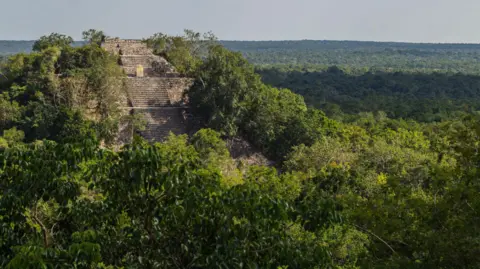Accidental Discovery of Ancient Mayan City Unearthed in Mexican Jungle

Lost Mayan City Discovered in Mexico's Jungle
Source: BBC News
Accidental Discovery of Valeriana
- A PhD student, Luke Auld-Thomas, unintentionally discovered the ancient Maya city named Valeriana using Lidar technology during an online search.
- The site, located in Campeche, Mexico, showcases pyramids, sports fields, and a complex urban layout.
Significance of the Find
- Valeriana is believed to be second in density only to the renowned Calakmul site, supporting a population of approximately 30,000 to 50,000 at its peak between 750 to 850 AD.
- This discovery challenges the notion that tropical regions were uninhabitable or civilizations "went to die" there.
Understanding the Ancient Civilization
- The city features multiple plazas, temple pyramids, and evidence of sophisticated water management systems, indicating a well-organized society.
- Climate change is identified as a possible cause for the city's decline, alongside warfare and the eventual Spanish conquest.
Technological Advances in Archaeology
- Lidar technology has revolutionized archaeological surveys by revealing hidden structures beneath vegetation, leading to the discovery of previously unknown sites.
- Research suggests that many more Maya cities could be unearthed using this technique, but the sheer number of discoveries may exceed excavation capacity.




